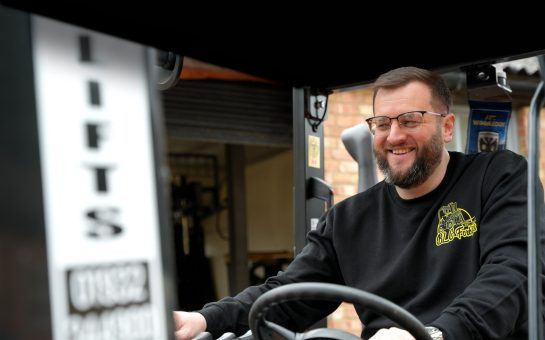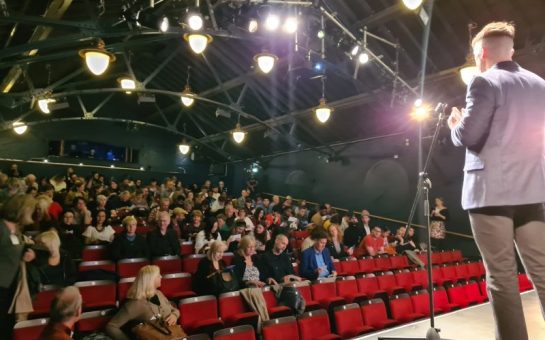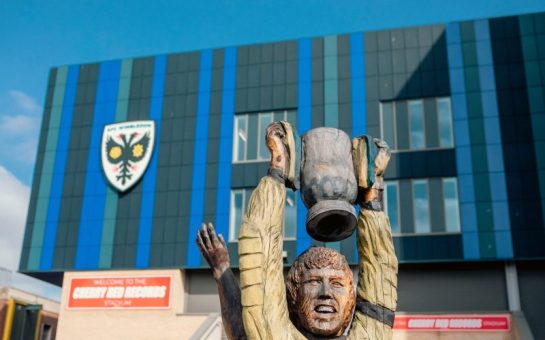Sam Smith investigates Europe’s first ever Buddhist temple.

By Sam Smith
The name Wimbledon conjures up images of sun-kissed grass tennis courts, elite tennis players and over-priced strawberries. It is also a name synonymous with Wombles who live in a burrow on the common. I know, because I have seen them. Wimbledon does not conjure up images of monks in colourful orange robes and an exotic Buddhist temple. And why would it?
Yet nestled away in suburban Wimbledon amid the grandiose houses where a BMW is the sign of a poor man, there lies Europe’s first Buddhist temple, The Buddhapadipa Temple.
Tomorrow is a special day in the Buddhist calendar. It is Visakha Puja, the day to commemorate the birth, the attainment of enlightenment and the passing away of the Buddha. So what better time to go unearth Wimbledon’s best kept secret?
I arrive at the temple grounds in disbelief that such a place exists in Wimbledon. The symbol on the gates – the only open gates in the neighbourhood – is of a Dhamma wheel with two deer sat beneath symbolising the animals that passed the Buddha in the Deer Park as he attained enlightenment.
The temple, home to six Thai monks known as Dhammaduta monks, relocated to Wimbledon from Richmond in 1976 in search of more space. The extra space needed was found on a site off Calonne Road where the four-acre grounds centre on the ‘Uposatha’ or Shrine Hall.
Built with support from the Royal Thai Government, it is a dazzling symbol of Thai architecture. Its pristine white walls, red-gabled roofs known as Caturamuk and golden trimmings are incongruous with the local area but a sight to behold on a wet, grey, rainy day.
I stumble into the monk’s house to find them finishing their lunch. I am told I will speak with one of them after I have eaten my lunch. “Lunch?” I enquire. “Lunch is Thai food, but real Thai food cooked by Thai people for the followers,” says Lynne Parry who has been coming to the temple for 20 years.
The monks finish their lunch and the gentle chatter gives way to melodic chanting as a blessing is given in Pali, the language of sacred Buddhist texts. About 30 followers squeeze into the Shrine room of the house which is dominated by a golden statue of the Buddha. I sit transfixed by the chanting and observe the rituals unfold.
“Come you must eat,” says a monk gesturing to the vast table of food laid out for the followers. There is a wide-range of people here: young, old, Asian, white, all of them friendly and welcoming.
When the moment is right, I am introduced to one of the monks, Phramaha (meaning ‘big brother’) Phaisal Khemacaro. I have met a few monks in my time and all have been incredibly hospitable and friendly, and Phramaha Khemacaro is no different. Originally from Thailand, he has been at the temple for six years and describes himself as “assistant Dhammaduta monk.”
In a slightly surreal scene, he sits relaxed in his orange robe behind a large wooden desk in the house office sipping a mug of coffee while I fumble with my notes.
“We have special day tomorrow. We celebrate the Buddha day,” he says.
“All the Buddhist countries around the world announce this day as a day of peace and then we celebrate it because the Buddha was born on this day and he passed away on this day and he got enlightenment on this day as well.
“Anyone can come and take part. But it is not just to come and eat free food!” he laughs.
He laughs again when I ask him if he would like to watch tennis at Wimbledon before explaining how he came to end up here.
“In Wimbledon it is quite good. I like the temple. At the weekend there are quite a lot of people here but Monday to Friday it is quite quiet and I like living piously here. It’s not noisy,” he says.
“When I go into Wimbledon, people who don’t understand the monk say to me ‘Are you Hare Krishna?’ because we wear the robes! It is normal for us when people look at us but people often talk to us about the Dhamma and what it is, the truth and the way of life.
“We have to train for three or six months before we come here. Normally the monk here is working. In Thailand the main thing is practising and training, but here we come to be a teacher. But sometimes we have to practise ourselves,” he says with a wry smile.
The Uposatha is a remarkable piece of Thai architecture, but it boasts an even more impressive interior. The interior walls are adorned with intricate murals depicting the life and story of the Buddha. Painted by volunteers, they are a breathtaking example of modern Thai art and include contemporary figures such as Mother Theresa.
“People say that you can see the building and the temple is in a Thai style, but you can’t say Buddhism is only Thai. Buddhism is universal. Our religion is open to everyone. We don’t convert or anything it depends on you,” he says.
“When I was in Thailand I saw a mural painting in a picture and thought ‘that mural painting is quite amazing, where is it from?’ I looked in Bangkok to try and find it but I couldn’t. So when I came here and we went to the main temple I saw the same mural painting and said ‘oh it is here!’
“This art is quite modern. I think we are lucky here, people can learn what Thai art is and the Buddha story as well,” he says.
The monks are often invited to give talks at schools across London, in hospitals and even to inmates in prison.
The temple also has its own Sunday School within the grounds with many courses on offer, such as beginner classes in Buddhism, meditation classes and talks on Dhamma.
“Sunday school is quite confused. The government send me forms saying ‘how many students do you have? How many teachers do you have?’ But we are not a school like that,” says Phramaha Khemacaro.
“We call it a school to make it easily known. We teach students but we don’t charge or do something like that. People come to volunteer to teach with us and to help each other in a community.”
The recent bloody events in Bangkok which saw the Thai government become embroiled in a violent confrontation with anti-government protesters resulting in more than a dozen people being killed, have not gone unnoticed at the temple.
However, Phramaha Khemacaro does not get drawn into the issue.
“For me I cannot hear a lot about that. I am a monk here. I concentrate here. A lot of people come and talk talk talk but I just tell them don’t be distracted too much by this because you have to look after yourself now. That’s my idea,” he says.
It is an idea inherent within Buddhism and one followed closely by Wimbledon resident Lynne Parry.
“I started coming here over 20 years ago. I used to walk around the grounds. Then about seven years ago I had a big change in my life and I started coming here more.
“I started helping then I started to go to meditation and I’m just part of it now and its part of me,” she says.
Ms Parry said she only came across the temple herself while on a driving lesson.
“People come here and say they’ve lived in the area for 50 years and they never knew the temple was here, because it’s so quiet here,” she says.
“I used to read about all different faiths. But I realised when I learnt about Buddhism here I always had those beliefs but I just didn’t have a name for it.
“For one thing you have to do it yourself. You can’t prey and ask a deity to do it for you. But it also teaches you how to let go. It teaches you how to be happy in life. It teaches you how not to be attached to all the normal things that we get attached to.”
Like tennis and Wombles.




